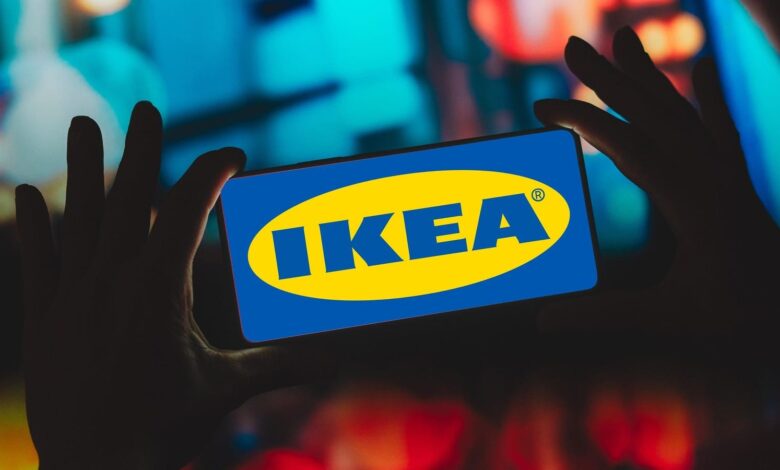The Amazing Ways IKEA Is Using Generative AI

The Amazing Ways IKEA Is Using Generative AI
Adobe Stock
Global furniture retailer IKEA has long been at the forefront of tech-driven retail innovation. This includes artificial intelligence and augmented reality – two technologies that it has leveraged successfully to improve customer experience and service.
Now, it’s unleashing the power of generative AI to give customers even more power when it comes to designing their ideal homes. It’s also created an ethical AI task force made up of experts from across the entire business to ensure this hugely transformative technology is rolled out responsibly.
It is also investing heavily in skilling its staff so that the entire workforce can effectively use AI to solve problems and drive efficiency.
Recently, I was joined for my podcast by Parag Parekh, Chief Digital Officer at IKEA Retail (Ingka Group), who talked me through the company’s plans and philosophy around digital technology and generative AI in particular. So, let’s take a look at some of the innovative ways it’s being used.
Enhancing Customer Experience
IKEA has unveiled a new generative AI chatbot powered by ChatGPT, with the aim of giving every customer their own AI design assistant.
Initially rolling out in the US, with further expansion to follow, the chatbot can answer questions about products and purchases, as well as make personalized design suggestions.
It’s intended to be used alongside IKEA Kreativ, an innovative online tool that lets users visualize and design their own living spaces in a mixed-reality environment.
Parekh tells me, “If I take a traditional user journey pre the AI era – typically it would be visiting our website … you decide what you really want in your home and then you put it into the basket, come to our stores to check that out, then you complete the purchase and have it delivered to your home.
“Now, come AI … maybe the customer journey is different. You probably aren’t looking at single pieces of furniture, but you’re looking at furnishing your home, bringing that to life. We allow you to actually take a scan of your room and give you an experience of what that furniture would look like.”
With the power of generative AI, users can erase existing furniture and replace it with new items to get an idea of the look and feel that can be achieved.
But it doesn’t end there. Customers can then interact with the AI to give it more information – what style – traditional, Scandinavian, modern – are they looking for? What color schemes do they like? What about the lighting? What is the budget? The AI can then generate any number of options and variations to browse and choose between. It’s a bit like having a professional interior decorator sit with you, helping you create the look you want.
“That’s something that we are experimenting with. You already see part of it with what we have released, but it’s something that’s in the works, and we are working with our creative and planning services to say, how do we really change the customer experience?”
IKEA’s staff, too, will benefit from generative AI tools, particularly from something that Parekh refers to as the “AI toolbox”.
Built on a custom version of Microsoft’s Bing co-pilot, it lets them quickly create content and assets that demonstrate products in relevant ways for customers.
Parekh gives the example of repurposing marketing material for different audiences and markets.
“Here’s a picture of a sofa that’s available on our website … now we’re going into Christmas, and we need to adapt it so that the images and content are relevant to a Christmas campaign.”
Traditionally, this would have involved all of the effort and expense of conducting a new photoshoot and launch campaign.
“You want some Christmas decorations, and the toolbox helps you generate an image with a Christmas tree behind the sofa, and all of a sudden, you have it ready.”
AI In Operations And Supply Chain
Along with cutting-edge generative AI projects like this, IKEA is invested in many “traditional” AI operations aimed at driving efficiency and cutting waste.
This includes optimizing the space used in its fleets of delivery and supply vehicles and using drones to monitor warehouse inventory across 16 of its European stores. It also uses demand sensing to forecast short-term consumer demand patterns. One example has enabled IKEA Portugal to improve the accuracy of its demand forecasting by five percent.
In its brand new 25,000 cubic meter distribution center in Tianjin, near Beijing, China, it is testing Autonomous Mobile Robots. These are designed to pick and pack its 9,500 products in a way that improves working conditions for warehouse staff and more efficiently uses filling and packaging materials, delivering improved sustainability.
Parekh highlights the transformative journey of evolving from traditional physical retail towards omnichannel retailing, emphasizing the need for disruption in the supply chain. He points out the emergence of new expenses, including those associated with handling, storage, and delivery in this new retail environment. Parekh says, “Here we are looking into how do we use AI to help us to bring affordability back into our supply chain … how do you put in an algorithm which optimizes for cost but also optimizes for a greener planet, and make sure that we ship the product from where it’s the most available and [also] the most convenient for the customer?”
Ethical And Responsible AI
IKEA’s AI task force has been put together to ensure this world-changing technology is rolled out in a way that will be beneficial for as many of its customers as possible while minimizing the potential for it to cause harm.
Parekh says, “This is one of the critical aspects where organizations need to take a much stronger stance.”
At the root of this is a human-centric approach, which involves starting every initiative by asking questions about what it will mean for customers and staff, as well as wider communities in general.
Parekh stresses the need to prioritize human values, asking if actions respect human agency and dignity and if a people-focused approach is central to all initiatives. Affirming these principles, he notes, paves the way for a thorough analysis of various use cases. This approach is characterized by a commitment to fairness, bias elimination, equity, inclusiveness, and privacy respect. Above all, he emphasizes that transparency is key. This commitment started with the introduction of a “data promise” in 2020 and continued recently with the relaunch of the company’s digital ethics policy in 2023.
In order to ensure staff have the knowledge and understanding needed to implement this, IKEA has rolled out an AI literacy program that aims to train 3,000 staff in the fundamentals of ethical and responsible AI in 2024.
Parekh says, “We believe that 60 percent of our employees will need to be reskilled to do the jobs of tomorrow. And we’d rather start now to make sure that they are ready … that they are embracing it.”
You can click here to watch my conversation with Parag Parekh, IKEA group CDO in full, where we delve into more of the company’s AI initiatives and plans for the future of retail.
Follow me on Twitter or LinkedIn. Check out my website or some of my other work here.



